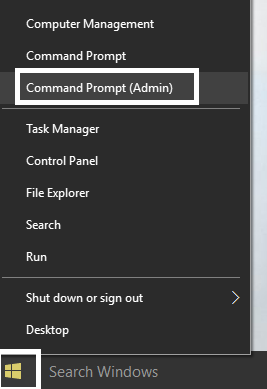Well, DiskPart is a command-line utility that comes inbuilt in Windows and it allows you to manage storage devices, partitions, and volumes by using direct input at the Command Prompt. There are many features of DiskPart like Diskpart can be used to convert a basic disk to a dynamic disk, convert dynamic disk to a basic disk, clean or delete any partitions, create partitions, etc. But in this tutorial, we are only interested in the DiskPart “Clean” command which wipes a disk leaving it unallocated and not initialized, so let’s see How to Clean Disk using Diskpart Clean Command in Windows 10.
When using the “Clean” command on MBR partition (Master Boot Record), it will only overwrite the MBR partitioning and hidden sector information and on the other hand when using the “Clean” command on GPT partition (GUID partition table) then it will overwrite GPT partitioning including the Protective MBR and there is no hidden sector information associated. The only drawback of the Clean command is that it only marks the data on the disk delete but will not securely erase the disk. In order to securely erase all the content from the disk, you should use “Clean all” command. Now the “Clean all” command does the same thing as “Clean” command but it makes sure to wipe each and every sector of the disk which completely deletes all the data on the disk. Do note that when you use “Clean all” command then the data on the disk is unrecoverable. So without wasting any time let’s see How to Clean Disk using Diskpart Clean Command in Windows 10 with the help of the below-listed tutorial.
Clean Disk using Diskpart Clean Command in Windows 10
Make sure to create a restore point just in case something goes wrong. 1.Press Windows Key + X then select Command Prompt (Admin).
2.Connect the drive or external device which you want to clean. 3.Type the following command into cmd and hit Enter: diskpart
4.Now we need to get a list of all the drive available and for that type the following command and hit Enter: list disk
Note: Carefully identify the disk number of the disk you want to clean. For example, you need to see the size of the drive then decide which is the drive you want to clean. If by mistake you selected any other drive then all the data will be wiped clean, so be careful. Another way to identify the correct disk number of the disk you want to clean is to use Disk Management, just press Windows Key + R then type diskmgmt.msc and hit Enter. Now note down the disk number of the disk which you want to clean.
5.Next, you need to select the disk in diskpart: select disk # Note: Replace # with the actual disk number which you identify in step 4. 6.Type the following command to clean the disk and press Enter: clean OR clean all
Note: Clean command will quickly finishing formatting your drive while “Clean all” command will take about an hour per 320 GB to finish running since it performs a secure erase. 7.Now we need to create a partition but before that ensure that the disk is still selected using the following command: list disk
Note: If the drive still selected, You will notice an asterisk (*) next to the disk. 8.To create a primary partition you need to use the following command: create partition primary
9.Type the following command into cmd and hit Enter: select partition 1
10.You need to set the partition as active: active
11.Now you need to format the partition as NTFS and set a label: format FS=NTFS label=any_name quick
Note: Replace any_name with anything you want to name your drive. 12.Type the following command to assign a drive letter and press Enter: assign letter=G
Note: Make sure the letter G or any other letter you choose isn’t in use by any other drive. 13.Finally, type exit to close DiskPart and command prompt. Recommended:
Read Event Viewer Log for Chkdsk in Windows 10 How To Cancel a Scheduled Chkdsk in Windows 10 4 Ways to Run Disk Error Checking in Windows 10 Back Up And Restore Your Bookmarks in Google Chrome
That’s it you have successfully learned How to Clean Disk using Diskpart Clean Command in Windows 10 but if you still have any questions regarding this tutorial then feel free to ask them in the comment’s section.












